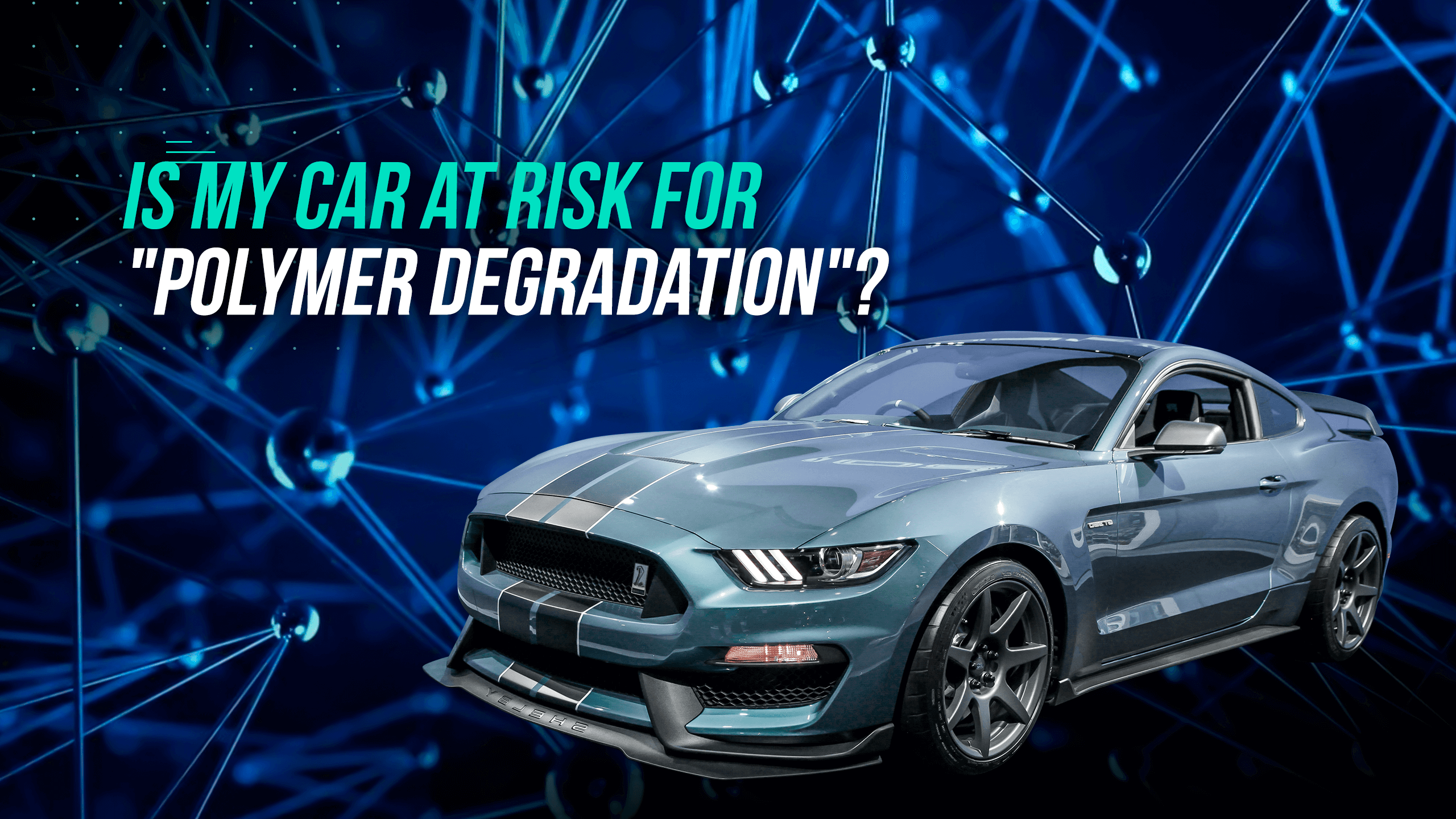Is My Car at Risk for "Polymer Degradation"?
11/07/2019
We should come to the heart of the matter: the appropriate response is "yes." truth be told, any polymer-based item or material you possess will experience the ill effects of polymer corruption, which is an adjustment in the properties of the material or item. It's brought about by consistent presentation to warmth, light, and certain synthetic concoctions, including antacids and acids, and normally brings about changes to the material's elasticity, shading, and shape.
In fundamental terms, polymer debasement a procedure of maturing. Similarly, as daylight and presentation to synthetic compounds negatively affect the human body, it does likewise for vehicles and different items made with polymers.
What Are Polymers?
Polymers are materials made of long, rehashing chains of particles. A few polymers, for example, elastic and wood, happen normally on the planet. Others are made-made (engineered). Contingent upon the kind of atoms and how they are fortified, polymers have one of a kind properties. Some curve and stretch, while others are hard and intense.
The advanced world is brimming with manufactured polymers since they are so flexible. You can discover them in items going from nylon leggings and garments to shopping sacks, PVC pipes, and vehicle tires. What makes manufactured polymers so valuable is their capacity to join quality, adaptability, compound inactivity, and protection from outside components into a wide range of materials. For instance, numerous polymers are solid and hard yet likewise adaptable – properties that don't, for the most part, go together.
Inside the vehicle business, polymers are enormous artificial atoms that are synthetically attached to make materials for different auto body parts. Specialists use them to improve the vehicle's appearance, adaptability, and usefulness. Auto polymers incorporate vinyl, elastic, and a wide range of plastics, and are commonly utilized in guards, spoilers, air dams, and other streamlined highlights. They are additionally utilized operating at a profit trim around windows, windshields, and bumpers.
You might be shocked to figure out what number of polymers are utilized in the creation of the present autos and trucks. A great many people realize that their vehicle's outside paint utilizes a polymer covering to feature the shading and gleam while framing a defensive layer against the earth. However, the inside of the vehicle contains numerous polymers also. These incorporate plastics in the dashboard, directing wheel, and consoles, textures utilized in seats and the sky is the limit from there. The main issue with polymers is they will in general separate quicker than the encompassing metal bodyboards when presented to daylight and different components, for example, air contamination, oxygen, soil, grime, and oil.
UV Exposure – The Bane of Polymer Materials
On account of the equivalent divine body that makes life conceivable on earth – the sun – all polymers are dependent upon corruption, incorporating those in your vehicle. At the point when presented to inordinate daylight, which is brimming with bright (UV) radiation, the shading, shape, and rigidity of polymers start to change. This procedure passes by a few names, including photodegradation, photograph actuated debasement, and UV corruption. Regardless of which name you use, the procedure is the equivalent. UV radiation assaults the polymers in your vehicle, making them break or crumble under consistent introduction to the sun's beams.
A vehicle's outside paint offers an ideal case of polymer debasement. As the polymers debase they start blurring in shading and losing their gleaming appearance. The covering loses quality and adaptability and starts to split. It's the capacity to oppose scratches additionally decreases. The rate at which the corruption happens relies upon the measure of UV light that gets ingested. The more UV assaulting the paint, the quicker the synthetic bonds in the material will break, prompting dying, blurring, and splitting.
In spite of prevalent thinking, the defensive layer of covering over the paint doesn't avert photodegradation; it just hinders the rate at which it happens. Be that as it may, UV light isn't the main guilty party. Air contamination, oxygen, soil, grime, and oil likewise add to separating the polymer bonds in the covering, in the long run prompting weakness and splitting.
This equivalent procedure happens with each polymer material in your vehicle. Long haul introduction to UV beams makes texture materials blur and lose their shading, quality, and adaptability. It can likewise prompt broke trim or embellishment around windows and wheel wells. Infrared warmth can dry out inside vinyl and different plastics, for example, dashboards and consoles.
Putting the Brakes on Polymer Degradation
Luckily, there are steps you can bring to back off and even counteract the polymer debasement process. It requires some investment, cash, and "real effort." But, your vehicle will look better and last more, attempting.
Most vehicle proprietors start with securing the polymer covering on the paint. The best treatment is likewise the most effortless – dodge the sun however much as could reasonably be expected. Parkin secured zones at shopping centers and open carports. Park in a carport at home and in the shade at work (maintain a strategic distance from trees that drop clingy substances). On the off chance that this is beyond the realm of imagination, utilize a vehicle spread.
Next, start applying a defensive covering over the external layer of the paint. At the end of the day, wax your vehicle all the time. Carnauba wax is viewed as the best quality level, yet there are a lot of good fluid and engineered waxes too. Additionally, keep the plastic, elastic, and vinyl surfaces of your vehicle free of the earth, residue, grime, and different flotsam and jetsam, and apply to specific items dependent on the sort of the material. If you don't have the opportunity or tendency to place in the work, numerous corner stores, carports, and fix shops offer proficient specifying administrations to keep your vehicle looking great while capturing the polymer debasement process.
When washing your vehicle, keep away from cleansers that are unreasonably brutal for polymer materials, as this can accelerate the debasement procedure. The equivalent goes for specifying items. Search for quality items that state on the name they are ok for use on polymers.
If polymer corruption of your vehicle's paint makes them watch old and exhausted, you can continually bring it into your closest Fix Auto shop. Our master auto body paint experts will decide the degree of the harm and offer paint and enumerating answer to get your vehicle looking like new once more.



